When and how to properly harvest pumpkin for storage: we harvest on time
Autumn is a traditional harvest time. The beautiful pumpkin is often called the vegetable queen of autumn. It is not surprising, after all, you always get a lot of positive from her, because she looks great, and is tasty and healthy.
Of course, many summer residents have a question: when and how to properly collect pumpkin in order to feast on this wonderful vegetable until summer?
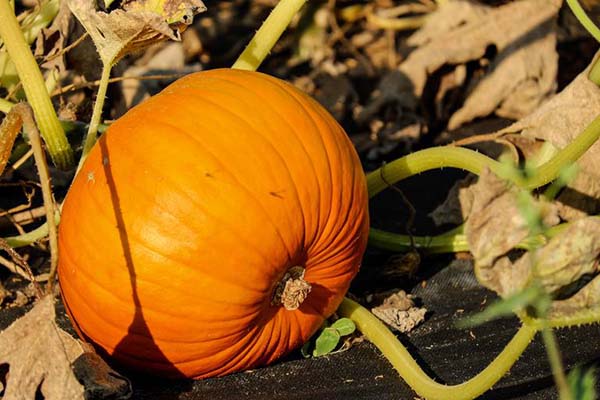
Content
When to harvest pumpkin
Naturally, the pumpkin harvest must be harvested on time. It is quite difficult to name the exact dates when it is worth starting cleaning the orange beauty. As a rule, this is the month of September-October.Determine a more specific time based on the following factors:
- ripening time of this variety;
- external signs;
- weather.
Important! If you do not remove the pumpkin in time, and it stale, it can easily become a delicacy for garden pests, for example, slugs.
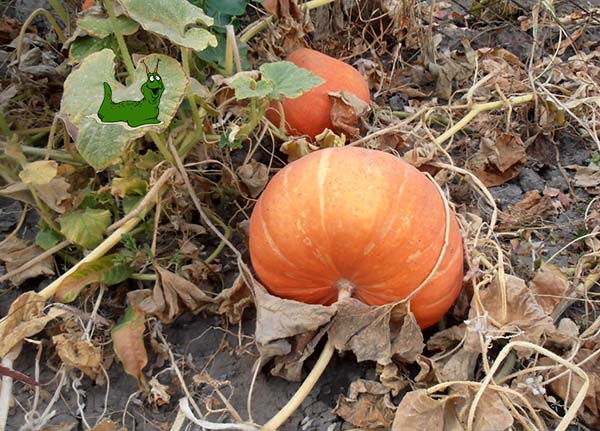
Ripening terms depending on the variety
Note! Let's say that you planted a pumpkin in open ground in mid-May, based on the variety, namely the timing of its technical ripeness, we will try to calculate the approximate time of harvesting.
By the time of ripening, pumpkins can be divided into the following varieties:
- Early ripening (90-105 days). That is, they need to be removed from the garden in August and early September. It is worth noting that such varieties are not suitable for long-term storage.
- Mid-season (105-120 days). Harvesting dates - September-early October.
- Late ripening (120-140 days or more). The approximate cleaning time from the garden is September-October (before frost).
Of course, your place of residence, namely the climate and weather conditions, can and will certainly affect the timing of planting, which means that the cleaning time will also be postponed. In cooler regions, for example, in the Leningrad region, in the Urals and in Siberia, as well as in central Russia, you will not be able to keep a vegetable in the garden for too long. But in the south, frosts usually come very late.
Advice! The approximate harvest time is always on the back of the seed packaging, where the instructions are.
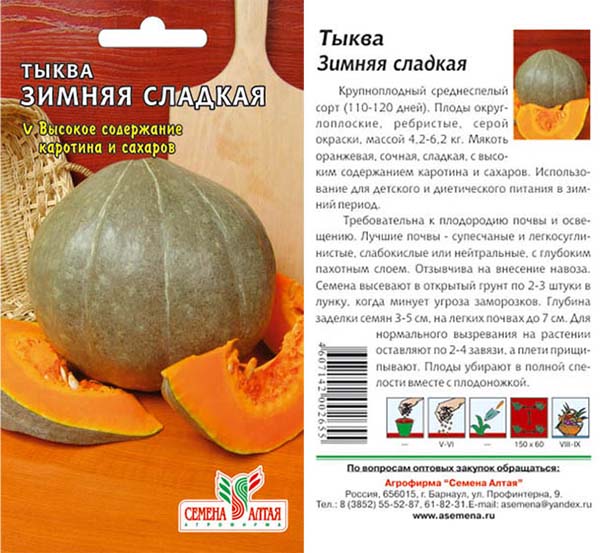
External signs of maturation
The biological ripeness of pumpkin can be judged by the following signs, which are manifested in the appearance of the vegetable:
- The peduncle becomes dry and hard (as if "woody" or lignified). If it is very juicy and completely green, then the vegetable is clearly not yet ready for harvesting.
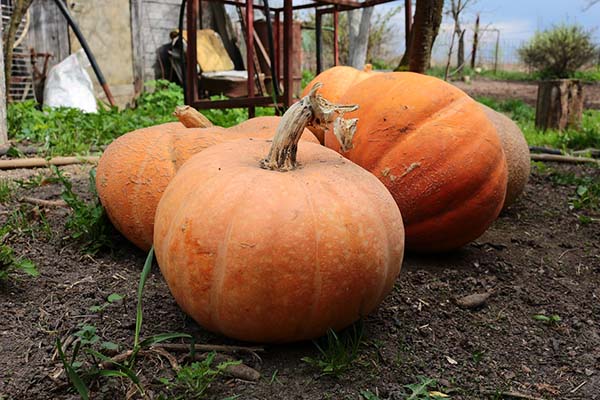
- The leaves on the shoots have noticeably dried up and turned yellow (not all, but a lot).
- Depending on the variety, the fruit can have a completely different color, from dark orange (with an intermediate yellow color) to gray-green.
- In a large-fruited variety (perfectly stored), the color becomes more saturated and bright.
- In nutmeg or small-fruited (the most delicious, but stored worse) and hard bark (best suited for storage), the color may change altogether (or a certain pattern will appear).
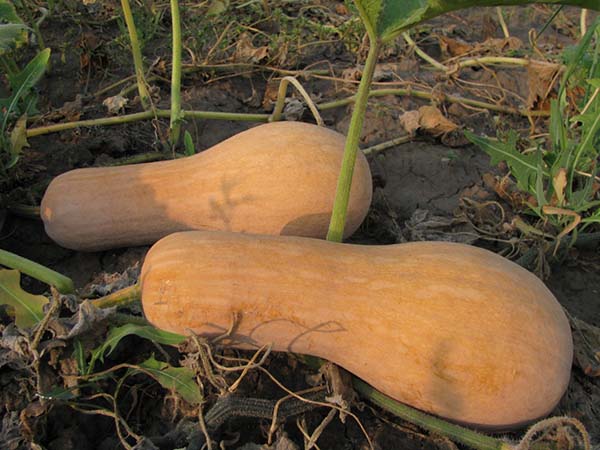
Muscat
Advice! If you still have a seed package (or you can find an image by the name of the variety on the Internet), then you can easily compare the appearance of your pumpkin with the exemplary one.
- The fruit skin (its shell) has become noticeably harder.
By the way! Determining the maturity of a pumpkin can be done in a very simple way. Try to lightly press on the vegetable with your fingernail: if it does not fit or is difficult, it means that the fruit is ready for storage.
- Some people manage to determine maturity by knocking on the bark: if a dull sound comes out, then the vegetable is ripe.
Note! It is necessary to assess the degree of maturity according to the entire set of signs, that is, in a complex manner, and not according to any one.
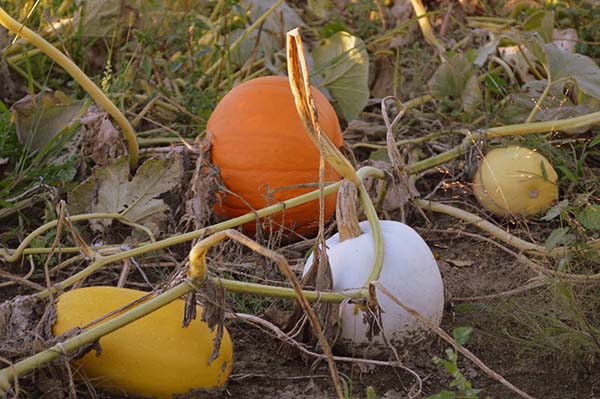
Weather
Harvesting is best done on a dry, clear (fine) day. If the weather is cloudy, there have recently been rains, then the vegetable must be dried well in the sun before mortgage for storage.
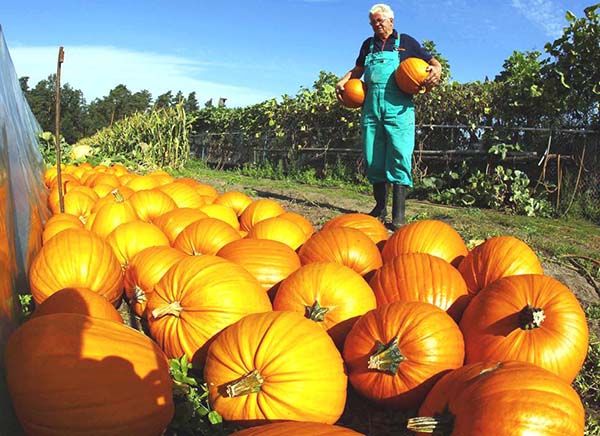
Advice! To prevent the pumpkin from rotting due to excessive moisture (autumn rains), it is recommended to put something under each fruit during the ripening period so that it does not come into contact with the ground, for example, a board or a piece of plastic.
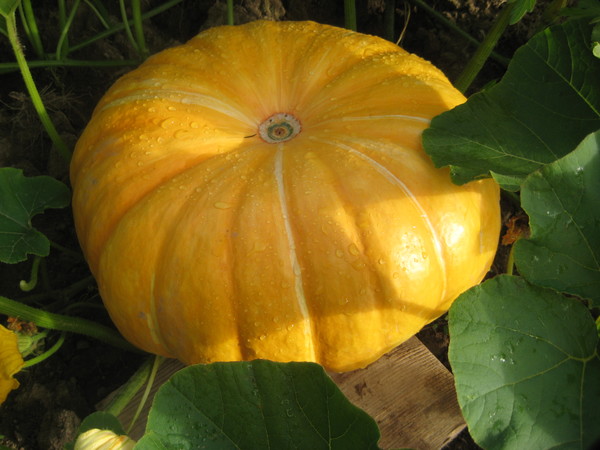
It is very important to follow the weather forecast. If suddenly there are frosts, then the pumpkin must be promptly removed from the garden, even if the fruit is not ripe (let it ripen at home), because if the frost picks up, then the vegetable will not only be unable to be stored, but will also lose all its useful properties.
Important! Some gardeners advise harvesting when the night temperature drops to + 4-5 degrees.
However, if the harvest is not yet completely, completely not ready, then you can try to cover the pumpkin patch with plastic wrap.
Video: when to harvest pumpkin
Thus, now you can easily understand when the crop is ripe and when it is time to harvest it for winter storage. But how to properly collect and prepare the pumpkins themselves for winter?
How to harvest pumpkin and prepare it for storage
When you cut a pumpkin from the stalk, you must definitely leave a 4-7 cm tail on the fruit, so it will be better and longer stored.In this case, it is better to do this with a clean and sharp knife or pruner. The cut itself must be even, otherwise bacteria can get there, and rotting will begin.
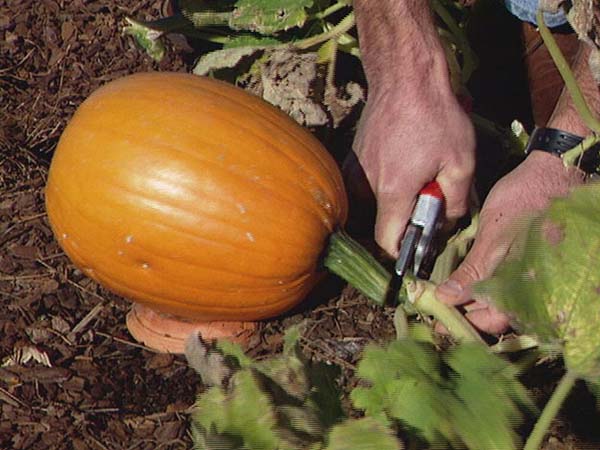
You cannot carry large fruits by the stalk, it can break off, so it is better to additionally hold it from below.
Now you need to look at the harvest, select all the healthiest and smoothest fruits, separately set aside injured and deformed specimens, it is better to eat them first.
Advice! If during cleaning or storage you damaged the upper shell, then you can try to lubricate the damaged area with brilliant green or even stick a bactericidal plaster.
Video: how to harvest pumpkins
Preparing for storage
Before putting the pumpkin for storage, the harvested crop should be kept for 2-3 weeks in a bright (but not in direct sunlight) and warm room at a temperature of +20 degrees. It is at this time that the process of accumulation of vitamins in the vegetable takes place, and the pulp becomes sweeter and more aromatic. Moreover, in such conditions, the fruits will definitely ripen.
Important! More about conditions and methods for long-term preservation of pumpkin read fresh and frozen in this material.
Unlike watermelons and melons, pumpkin can be stored much longer (of course, if you do not violate the storage rules), while not losing its beneficial properties and, accordingly, be eaten until next summer season.
Pumpkin is a symbol of autumn, that time of year when we expect and receive all the best from nature: an excellent and high-quality harvest. In order to effectively harvest and preserve the pumpkin harvest, it is worth taking a lot seriously: the timing of ripening, external signs of the readiness of the fruit, weather conditions. It is also extremely important to focus on preparing the pumpkin for storage.
Note! About, how to carve a pumpkin for Halloween, you will learn from of this article.


